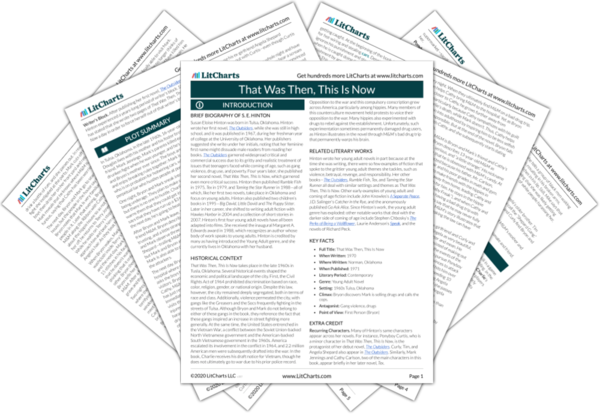AI ToolsNew
Tools to make learning and teaching easier
|
Previous
Chapter 3
|
That Was Then, This Is Now: Chapter 4 Summary & Analysis |
Next
Chapter 5
|


Upgrade to unlock the analysis and theme tracking for all of That Was Then, This Is NowThat Was Then, This Is Now!
Get LitCharts A+